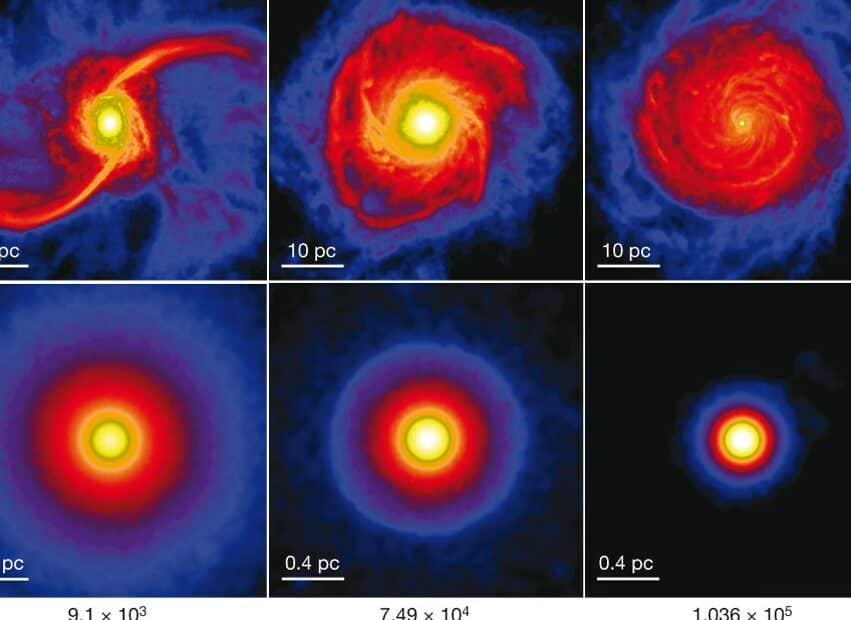A black hole is a celestial object characterized by an extremely powerful gravitational pull that not even light particles can escape from. These massive gravitational forces result from the compression of matter into a highly compacted space. Scientists believe that similar processes take place during the death of stars, leading to the creation of black holes.
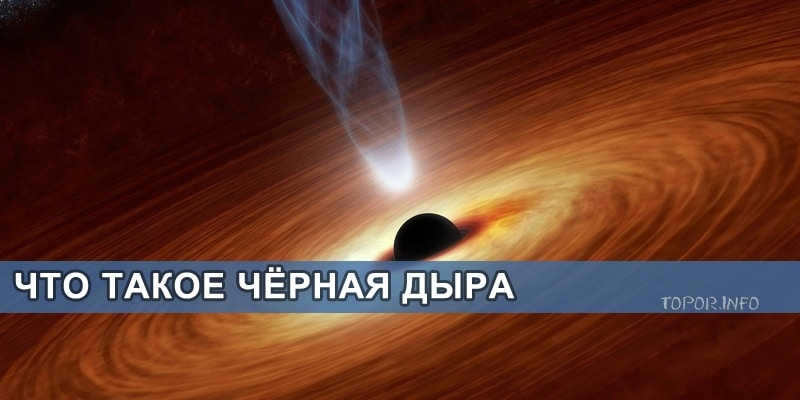
Due to the fact that no light can escape from this region, black holes are completely imperceptible. However, space telescopes equipped with special technology can detect their presence. For instance, it is feasible to observe peculiar actions of objects in close proximity to the black hole.
The Dimensions of Black Holes
Scientists hypothesize that the tiniest black holes, even as small as a single atom, might have materialized during the initial moments of the Universe. Similar conditions are replicated in the Large Hadron Collider, which has sparked public concerns about the potential creation of a black hole.
A different type of black hole, known as a “stellar black hole,” can possess a mass up to 20 times that of the Sun. It is plausible that there are numerous stellar-mass black holes within our galaxy.
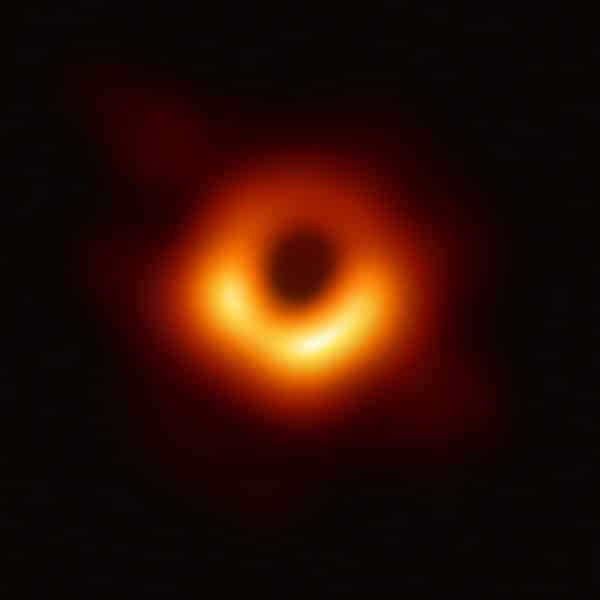
Supermassive black holes are the largest type of black holes. They possess masses exceeding that of 1 million suns. Researchers have discovered proof that every sizable galaxy houses a supermassive black hole at its core. In the case of our Milky Way galaxy, this object is known as Sagittarius A. It boasts a mass equivalent to approximately 4 million Suns.
Formation of black holes
Black holes occur when large celestial bodies, such as stars, possess significant gravitational forces. Despite this gravity, the matter within the star is prevented from collapsing by thermonuclear reactions. This delicate balance between gravity and pressure maintains the star’s shape.
Scientists propose that a black hole represents the final stage in a star’s life, particularly one with a mass exceeding 20 times that of the sun. When the thermonuclear reactions within such a star cease due to fuel depletion, it undergoes a rapid transformation into a neutron star due to its immense gravitational pull. Depending on its initial mass, the neutron star may either remain highly dense or continue to collapse with such intensity that even light cannot escape, resulting in the formation of a black hole.

There is an alternative scenario where the same set of processes occur with interstellar gas that is in the process of transforming into a galaxy or a cluster. If the internal pressure fails to counteract gravity, all matter begins to collapse, resulting in the creation of a black hole.
Is it possible for a black hole to annihilate Earth?
Black holes do not traverse through space, engulfing stars, moons, and planets. Earth will not be consumed by a black hole because none of them are in close proximity to our solar system.
Even if a black hole with the same mass as the Sun were to form at the center of our system, Earth would still not be pulled into it. The black hole would possess the same gravitational force as the Sun. The Earth and the other planets would continue to orbit around it just as they orbit around the Sun.
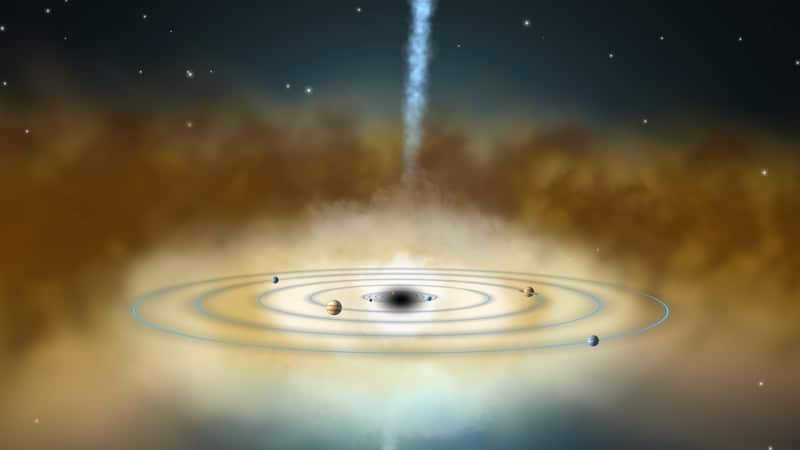
Regardless, the Sun is not large enough to undergo the process of collapsing into a black hole.
If you found this article helpful, consider making a donation of at least 30 rubles on Boosty to support the dissemination of similar content.

The Universe
Black holes are defined as restricted regions of the cosmos where the force of gravity is incredibly intense that even light particles cannot break free, becoming trapped within the relentless grip of gravity.
What is the process of black hole formation?
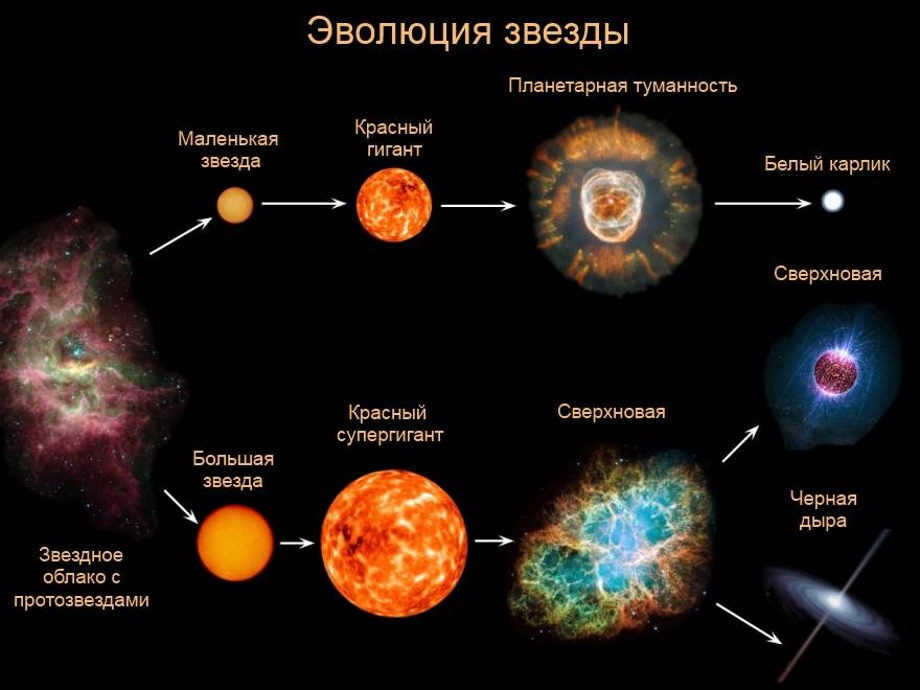
Scientists hypothesize that there could exist multiple variations of black holes. One type might emerge when a massive aging star reaches the end of its life cycle. Stars are continuously being born and perishing throughout the vast expanse of the universe.
Another classification of black hole is believed to be an enormous, dark mass positioned at the core of galaxies. These colossal black entities result from the accumulation of millions of stars. Lastly, there are miniature black holes, comparable in size to a pinhead or a small marble. These compact black holes form when relatively small amounts of matter are compressed to infinitesimal dimensions.
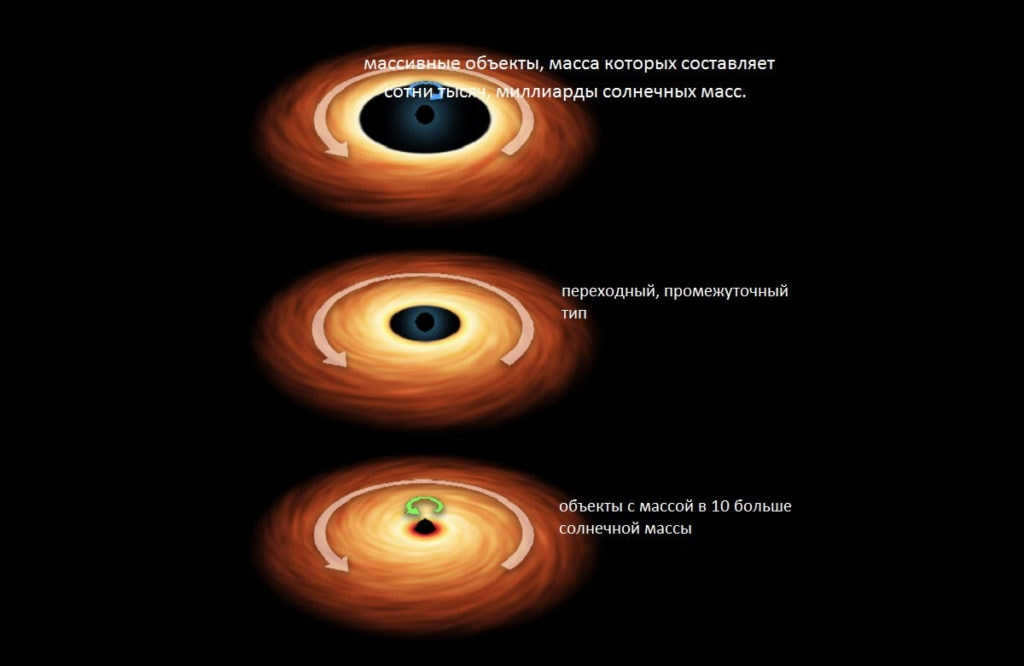
The initial category of black hole is generated when a star, ranging in size from 8 to 100 times that of our Sun, concludes its existence through a tremendous detonation. The remnants of this particular star are condensed, or more technically speaking, they undergo a collapse. Due to the gravitational force, the compression of the star’s particles progressively intensifies. Scientists theorize the existence of an enormous black hole, surpassing the mass of a million suns, situated at the heart of our galaxy, the Milky Way.
What Causes a Black Hole to Appear Black?
A black hole gets its name from the fact that it appears completely black, absorbing all matter and light that comes near it. This phenomenon is a result of the intense gravitational force that is generated by a superdense star.
Gravity is the force that attracts one object to another, and the more matter there is in one place, the stronger the gravitational force becomes. In the case of a black hole, so much matter is concentrated in a limited volume that the gravitational force becomes unimaginably powerful.
As the superdense star continues to shrink, the gravitational force continues to increase. Eventually, it reaches a point where even light cannot escape from its surface. This means that any matter or light that comes close to the black hole is irreversibly absorbed by it, leading to its pitch-black appearance.
Although scientists have not yet obtained clear evidence for the existence of supermassive black holes, they are constantly directing their telescopes towards the centers of galaxies, including our own, in an effort to study these mysterious regions and gather proof of the existence of black holes of the second type.
NGC4261 has always fascinated scientists due to its unique features. One of the most intriguing aspects of this galaxy is the presence of two enormous tongues of matter that extend for thousands of light years each. To put the mind-boggling length of these tongues into perspective, it is worth noting that one light year is equivalent to approximately 9.6 trillion kilometers. Upon observing these remarkable structures, scientists have postulated that a massive black hole lurks at the heart of NGC4261. In 1992, using a state-of-the-art space telescope equipped with weightless lenses, researchers were able to capture exceptionally clear images of the enigmatic galaxy’s center.
Astronomers have observed a luminous and rotating collection of matter that resembles a doughnut-shaped cluster, spanning hundreds of light years. Researchers propose that at the core of this doughnut is an enormous black hole containing the mass equivalent of 10 million stars. The remaining matter within the galaxy orbits around this black hole, akin to water swirling around a drain, and is gradually drawn in by the immense gravitational force.
Miniature black holes
Miniature black holes, assuming their existence, emerged during the tumultuous compression of substance that occurred prior to the inception of the cosmos. While these minuscule holes might have already dissipated, the larger ones could be concealed somewhere within the vast expanse of the Universe. If our planet were to transform into a black hole, its size would be no larger than that of a ping-pong ball.
If you have discovered an inaccuracy, kindly mark the relevant text and press Ctrl+Enter.

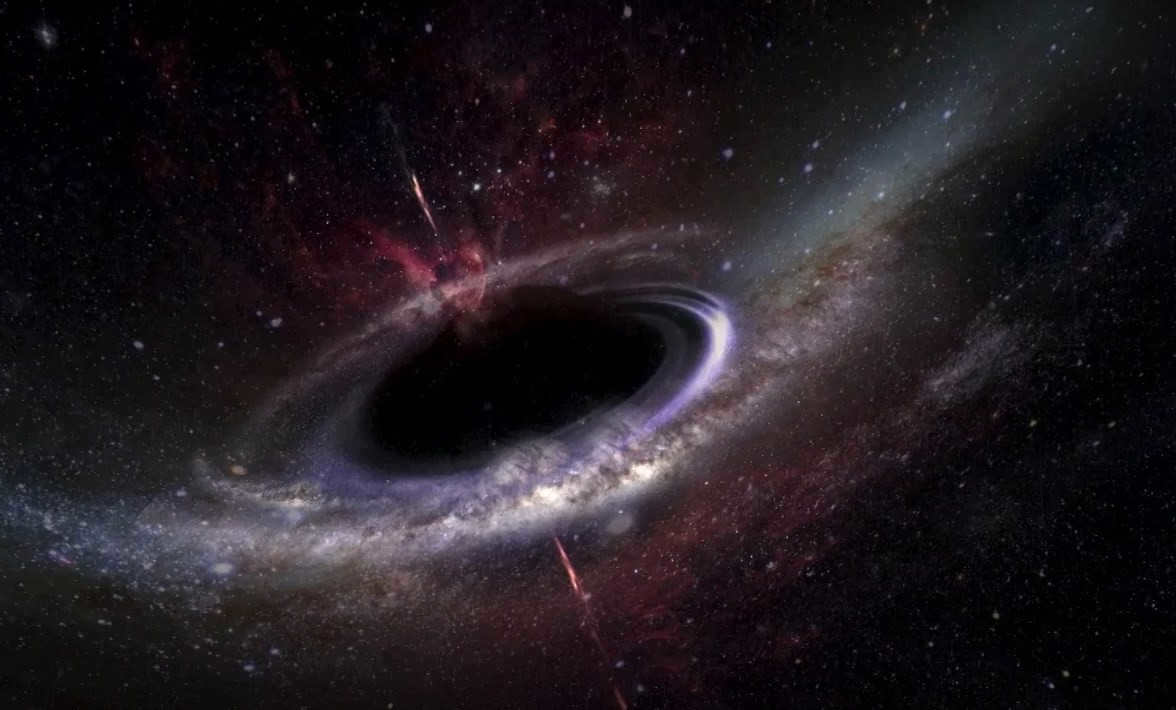
Outer space
An extraordinary phenomenon known as a black hole exists in the vastness of the Universe. It captivates the attention of scientists who encounter numerous challenges while attempting to unravel its mysteries. However, thanks to the advancements in modern technology, researchers are not only able to formulate theories regarding the composition and characteristics of black holes but also put these theories to the test. In fact, in the year 2019, scientists achieved an unprecedented milestone by capturing and sharing the world’s inaugural photograph showcasing this enigmatic cosmic entity.
What exactly is a black hole?
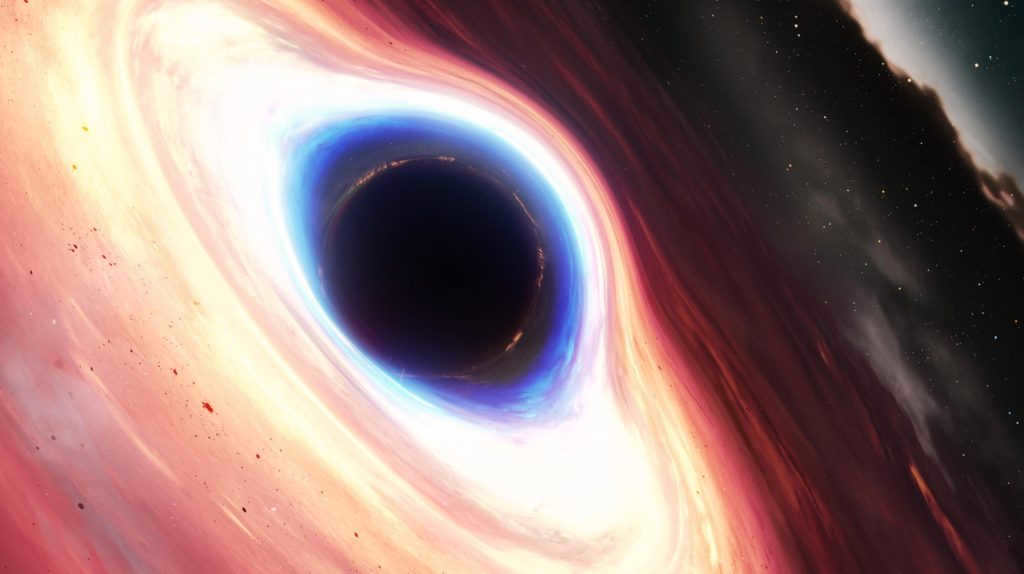
It may appear peculiar, but black holes possess the most simplistic attributes in the entirety of the universe. They can be described by merely two factors: rotational velocity and mass. In the realm of astrophysics, they are perceived as the ultimate phase in the life cycle of stars. When a luminary reaches the end of its existence, it undergoes a cataclysmic explosion, with its core transforming into a black hole.
Did you know that an interesting fact about black holes is that in order to escape from a black hole, an object would have to travel backwards in time, which is theoretically impossible?
Have you ever wondered why black holes are called black holes?
Originally, these celestial objects were referred to as collapsars. However, in the 20th century, journalists from scientific publications started using the term “black hole”. Physicist John Wheeler liked it so much that he made it the official name.
Black holes are given this name because they completely absorb light, rendering them invisible. The only way to observe a black hole is if there is a surrounding shell of gas or other substances at the event horizon. Additionally, a black hole can become visible if it absorbs matter and energy from a nearby star. Otherwise, it remains undetectable to both the naked eye and scientific devices.
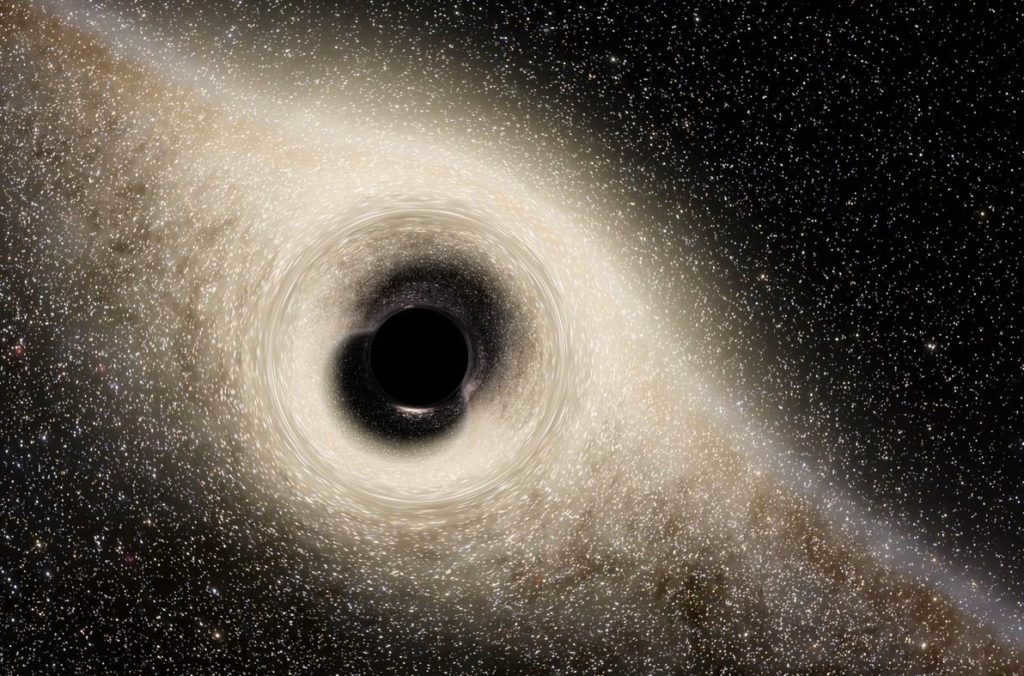
Even though these objects completely absorb light and do not reflect it, there is a theory suggesting that they might emit radiation. Throughout their lifespan, black holes can release various elementary particles into space, with the majority being photons. From a physical standpoint, this process resembles a gradual evaporation. Currently, this phenomenon remains unproven and exists only as a hypothetical model. Scientists refer to it as Hawking radiation.
Black holes become visible when they collide with one another, emitting noticeable gravitational waves into space.
What is the origin of black holes?
The formation of black holes is directly related to their mass. Depending on their mass, black holes can be classified into two categories: stellar black holes, which are approximately the same mass as several Suns, and supermassive black holes, which have a mass millions of times greater.

Fascinating fact: The size of a black hole is directly proportional to its mass. The larger its mass, the wider the event horizon becomes.
Research indicates that black holes in close proximity to stars have a significant age and most likely formed during the early stages of the universe’s development. These black holes are created through the collapse of stars that are 25-70 times the size of the Sun. Once the star ceases to shrink, it undergoes a supernova explosion, leaving behind a black hole at its core.
Throughout their existence, both types of entities attract matter from outer space that crosses their event horizon, thus causing their dimensions to gradually expand. Additionally, if absorption occurs asymmetrically, the entity will begin to rotate in a specific direction.
What is the structure of a black hole?
All black holes spin on their axis, and their physical appearance is directly influenced by their rotational speed. If the rotation is slow, the entity will assume a spherical shape. However, when the black hole rotates at a high velocity, its poles will flatten, resulting in an oval shape.
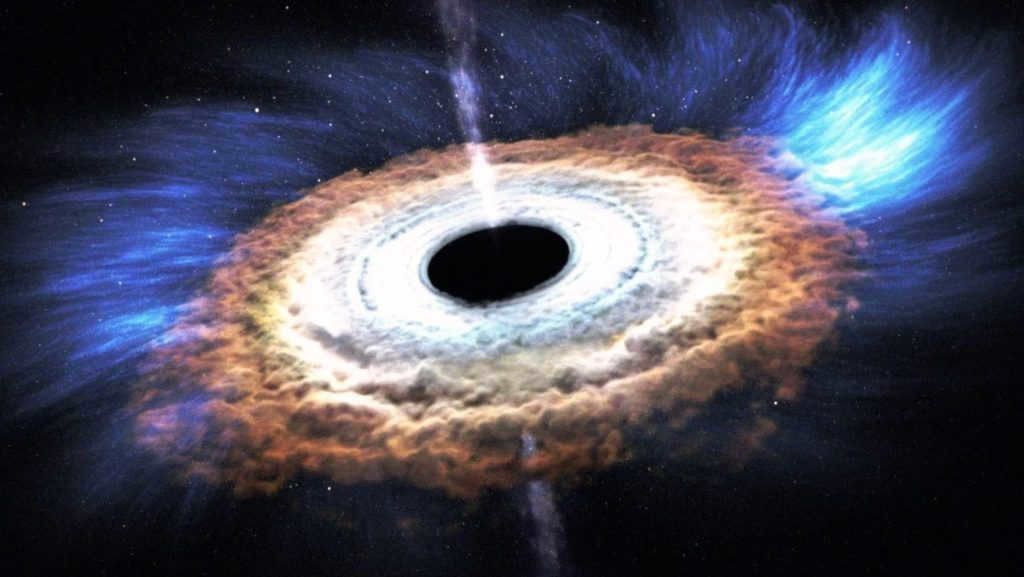

Black holes can have various shapes, including round or oval.
Currently, modern technology is capable of determining the shape of black holes. However, the contents of the black hole’s center still remain a mystery to scientists. It is understood that the laws of physics do not apply in this region, and the curvature of space approaches infinity. The prevailing belief is that a singularity exists within the black hole.
Structure and physics of black holes
Black holes are fascinating objects that have captured the attention of scientists and the public alike. They are regions in space where gravity is so strong that nothing, not even light, can escape their pull. The structure and physics of black holes are still a topic of intense study and debate.
One aspect of black holes that is of particular interest is their structure. Black holes are thought to have a singularity at their center, which is a point of infinite density and zero volume. Surrounding the singularity is the event horizon, which is the point of no return for anything that falls into the black hole. The event horizon is the boundary beyond which nothing can escape the gravitational pull of the black hole.
The physics of black holes is also a subject of great interest. Black holes are formed from the collapse of massive stars, and their formation and evolution are governed by the laws of general relativity. The intense gravitational forces near a black hole cause space and time to become distorted, leading to phenomena such as time dilation and gravitational waves. These effects have been studied and confirmed through observations of black holes and their surroundings.
In recent years, the study of black holes has been revolutionized by the discovery of gravitational waves. Gravitational waves are ripples in the fabric of spacetime that are caused by the acceleration of massive objects. They were first observed in 2015 by the LIGO experiment, and since then, several other gravitational wave events have been detected. These observations have provided valuable insights into the physics of black holes and have opened up new avenues of research.
In conclusion, the structure and physics of black holes are fascinating and complex topics that continue to be studied and explored. The discovery of gravitational waves has revolutionized our understanding of these enigmatic objects, and future observations and experiments promise to further expand our knowledge.

Every black hole is composed of two fundamental components. The event horizon acts as a boundary, marking the point at which any object that crosses it becomes subject to the gravitational pull of the black hole. The singularity, on the other hand, occupies the inner region of the black hole. Despite extensive scientific research, the nature of the singularity remains unknown. Within its confines, the laws of physics break down and time and space become distorted.
When a black hole rotates, an ergosphere forms around the event horizon. Objects within this region are also influenced by the rotational motion. However, the gravitational pull is not strong enough to draw them into the singularity. As a result, objects are able to escape the ergosphere.
Here’s a fascinating fact: The density of a black hole decreases as it gets heavier. This is because, as its weight increases, its volume grows at a faster rate.
Various Categories of Black Holes
Through the exploration of the cosmos, scientists have categorized black holes into four distinct types, each with its own unique characteristics.
Black holes with the mass of a star
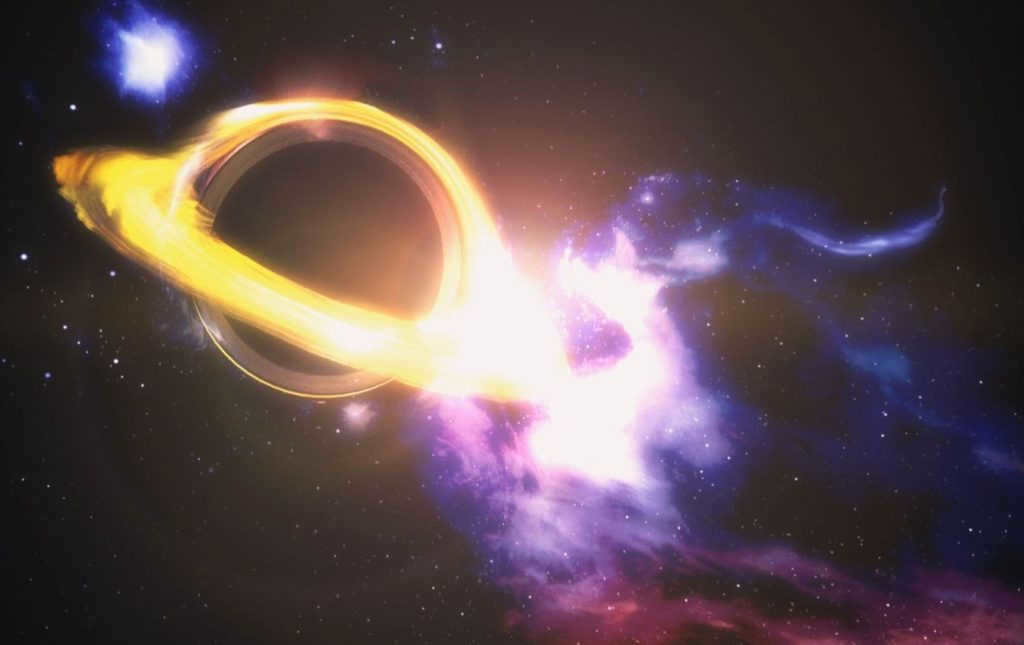
This particular kind of black hole arises when the fuel within a star is consumed. As the thermonuclear reaction ceases, the star cools and contracts under the influence of its intense gravity. If this contraction halts at a certain stage, a neutron star is formed. However, if the contraction persists, the star will eventually collapse into a black hole due to gravitational forces.
Supermassive black holes
Supermassive black holes are extremely large and mysterious objects that have captivated the curiosity of scientists and astronomers for decades. These cosmic phenomena are thought to reside at the center of most galaxies, including our own Milky Way. Their immense gravitational pull is so strong that not even light can escape their grasp, earning them the name “black holes.”
Despite their enigmatic nature, researchers have made significant progress in understanding supermassive black holes in recent years. Through the use of advanced telescopes and instruments, scientists have been able to observe and study the effects of these behemoths on their surrounding environments.
One of the most intriguing discoveries about supermassive black holes is their role in the formation and evolution of galaxies. It is believed that these cosmic giants play a crucial role in shaping the structure of galaxies and influencing the distribution of stars and gas within them.
Additionally, supermassive black holes are thought to be responsible for some of the most energetic and violent events in the universe. When matter falls into a black hole’s gravitational pull, it can create a swirling disk of hot, glowing gas and dust known as an accretion disk. This disk can generate intense radiation and jets of high-energy particles that can be observed from great distances.
While much progress has been made in understanding supermassive black holes, many questions still remain unanswered. Scientists continue to investigate the origins of these celestial objects and their precise mechanisms of operation. Unlocking the secrets of supermassive black holes will not only deepen our understanding of the universe but also shed light on the fundamental laws of physics.
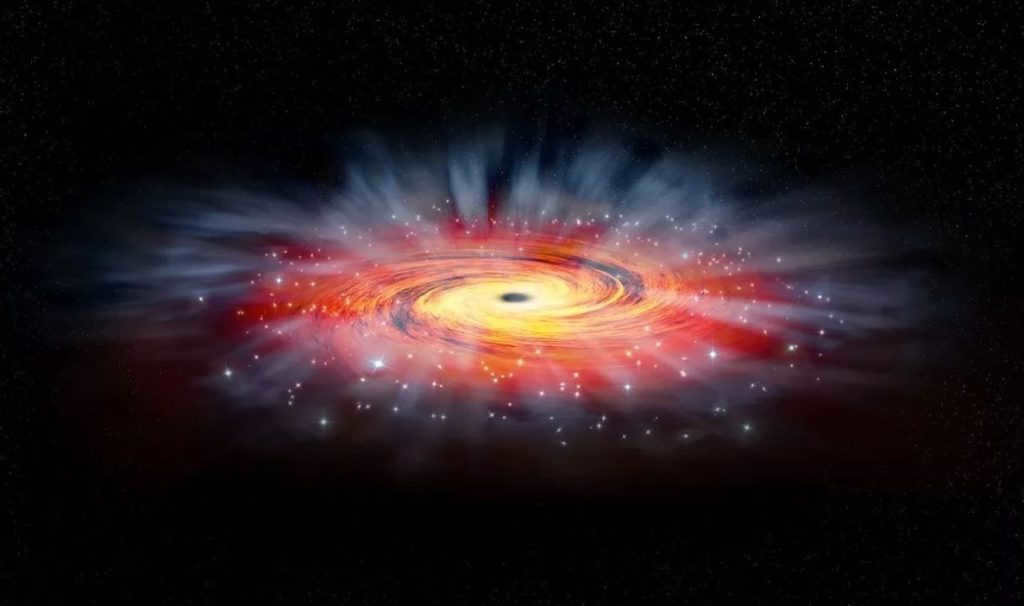
Members of this category possess immense sizes and a substantial mass. Recently, American scientists have confirmed that these entities possess a significantly higher mass than previously believed. For instance, initial estimates indicated that the mass of the black hole situated at the core of the M87 galaxy amounted to three billion solar masses. However, more comprehensive investigations have revealed that this value is significantly greater. In order for a black hole to exert an influence on the orbital motion of stars within a galaxy, it must possess a mass of 6.5 billion solar masses.
Fascinating fact: In the majority of cases, a supermassive black hole is situated at the center of a galaxy and functions as its nucleus.
Supermassive black holes can form from either stars or gas clouds. During this process, they consume vast quantities of matter from the surrounding space, steadily growing in mass and size.
Main black holes
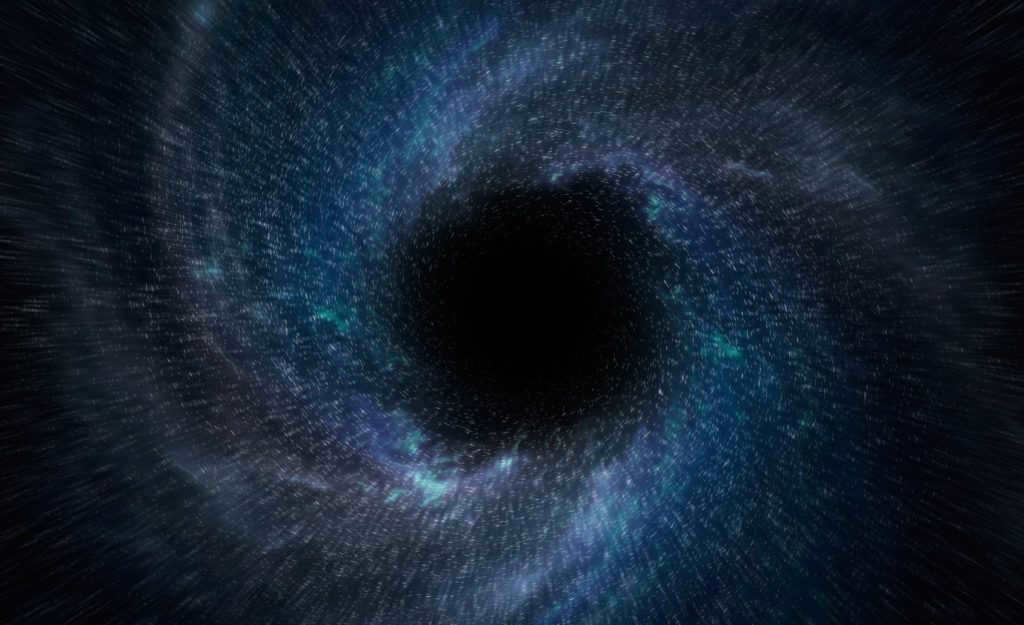
The presence of primary black holes in the cosmos has yet to be definitively established. The prevailing hypothesis suggests that during the initial stages of cosmic formation, fluctuations in gravitational fields and significant deviations in their uniformity could have played a role in the creation of these celestial bodies. Should primary black holes indeed exist, they are believed to possess a relatively modest mass, potentially even smaller than that of our own Sun.
Black holes at the quantum level
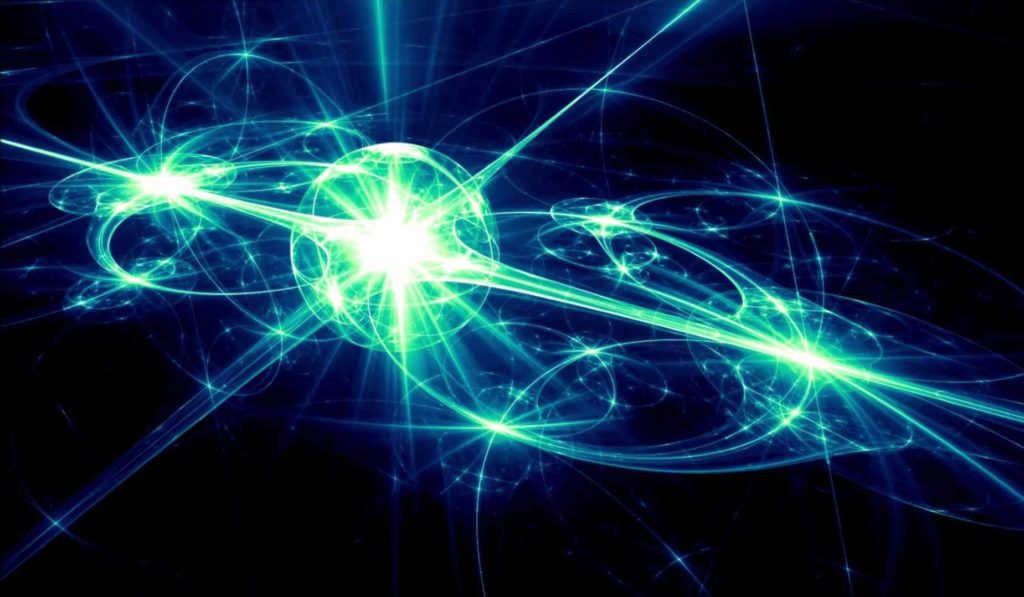
Quantum singularities may be formed due to nuclear reactions that involve immense amounts of energy, equivalent to 10^26 eV or more. However, humanity currently lacks the capability to surpass this threshold, thereby rendering this type of entity purely theoretical.
The collision of protons is believed to potentially yield a quantum singularity. If a significant amount of energy is released during this process, it could result in the emergence of the most fundamental particle – the maximon. The maximon could be regarded as a quantum singularity, possessing a radius of approximately 10^-35 m and a mass of 10^-5 g, making it the most massive elementary particle.
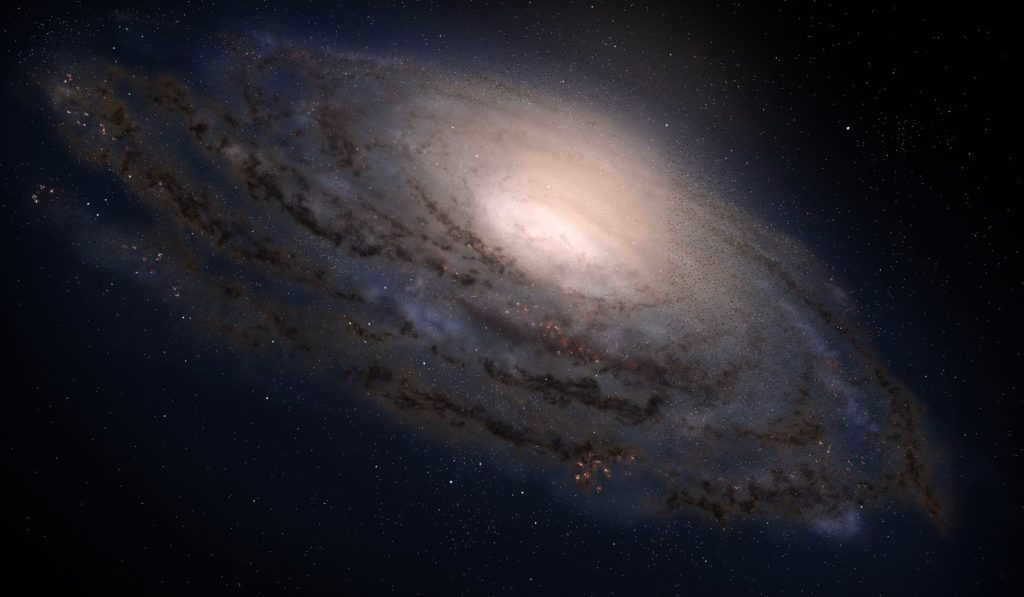
Detecting black holes is a complex process that involves extensive space observation and data collection. Additionally, many of these objects remain invisible until they start absorbing matter from nearby space.
Within our galaxy, the Milky Way, there are approximately ten regularly monitored black holes. However, there could be millions of these celestial bodies present, including both small and supermassive ones.
Here’s an intriguing fact: The Milky Way contains around 400 million stars with enough mass to potentially become a black hole.
In 2005, scientists discovered an inhomogeneous region that is gradually moving around the center of the galaxy. The data suggests that this particular area of the Milky Way may house up to 20 thousand black holes.
In the past, a group of astronomers from Japan made a groundbreaking discovery when they stumbled upon an entity positioned in close proximity to Sagittarius A*. This object possesses a mass equivalent to that of 100,000 suns and has a diameter spanning 0.3 light-years. There is a possibility that it could be classified as a black hole.
An unprecedented colossal black hole
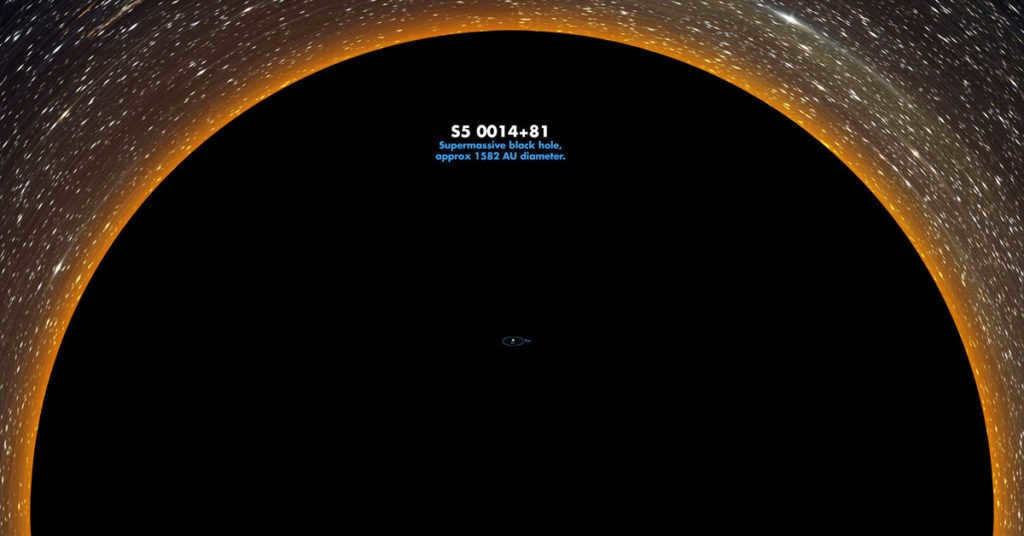
The galaxy S5 0014+81 is home to the most massive black hole ever discovered, known as the FSRQ blazar. This supermassive object is located a staggering 12 billion light years away from our solar system.
With a weight of 40 billion times that of our sun, the FSRQ blazar has a diameter of approximately 0.026 light-years. This immense black hole is estimated to be around 12 billion years old, which means it formed just 1.5 billion years after the birth of the universe.
After analyzing the celestial entity, researchers have reached the determination that its reserves are sufficient to endure until the age of black holes and transform into one of the final entities in the vastness of space. This epoch refers to one of the potential trajectories of the future progression of the cosmos, wherein nearly all the stellar bodies within galaxies will extinguish, with the majority transitioning into black holes.
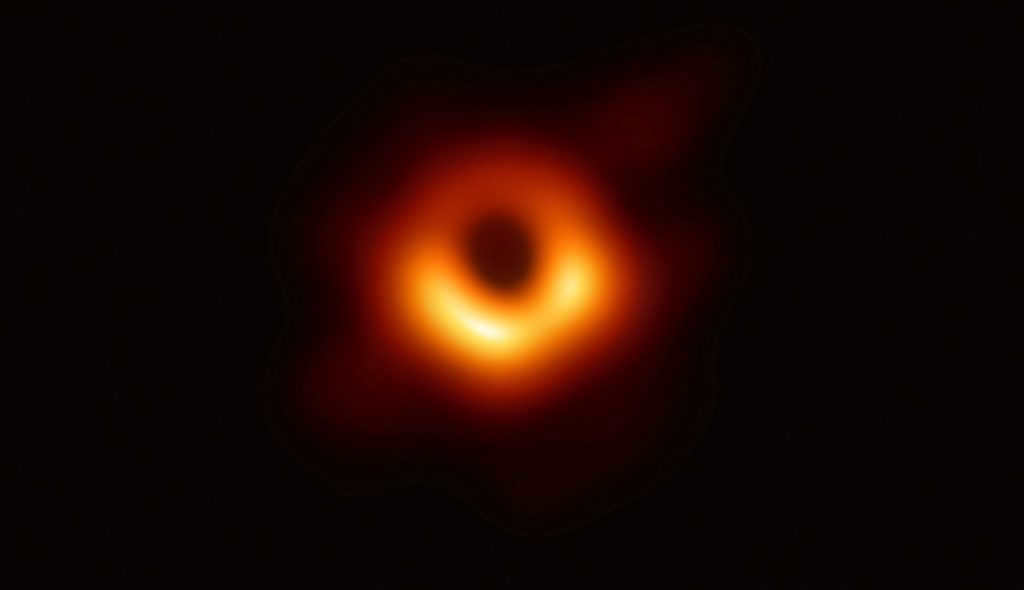
Black holes are a subject of scientific research due to their connection to various properties of the universe. They act as the central points of galaxies and contribute to their rotation. The collision of black holes generates gravitational waves. The interior of black holes is particularly intriguing as it operates outside the boundaries of traditional physics. The examination of black holes provides insights into the fundamental principles of cosmic structure.
Currently, astronomers have identified and studied approximately ten black holes in close proximity. Numerous similar objects are also under observation, although the available data is insufficient to definitively classify them as black holes.
Have you ever wondered about the consequences of entering a black hole?
If an individual were to find themselves in the depths of a black hole, it would undoubtedly result in a series of unfortunate events. Once an object crosses the event horizon, it becomes subject to the immense gravitational pull exerted by the black hole. Consequently, the object undergoes extreme stretching on one side and compression on the other, gradually transforming into a collection of atoms that ultimately merge with the singularity.
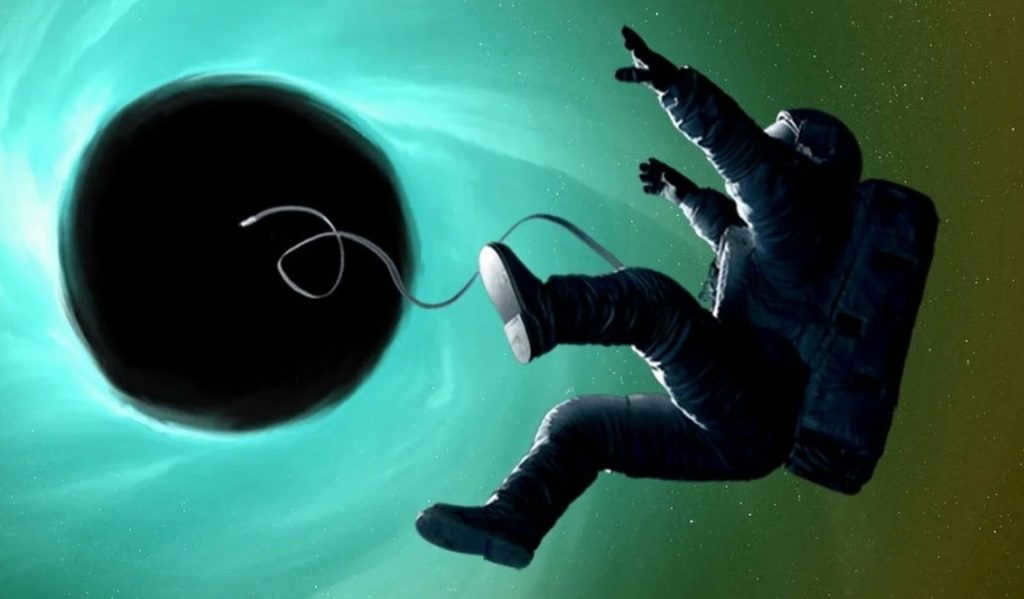
Fascinating tidbit: in certain works of science fiction, literature, and video games, black holes are often depicted as portals, however, in actuality, they cannot be utilized as a means of transportation to another dimension or location in space.
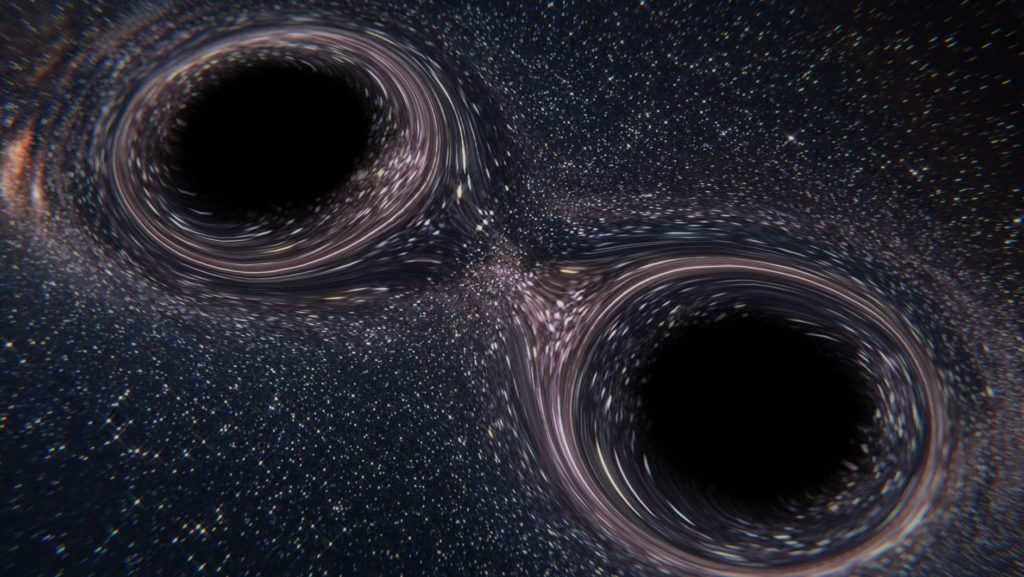
Black holes have the ability to collide, although they must be in close proximity to one another in order for this to occur. This event is most commonly observed following the demise of a binary star system. When both stars, which are situated at a relatively short distance apart, undergo a transformation into black holes, they begin to draw closer to each other and eventually collide.
This phenomenon can also take place when galaxies merge. During this process, it is possible for two black holes from different star clusters to come into close proximity and collide. However, such an occurrence is quite rare, happening only once every few billion years.
When black holes collide, a merger process is initiated, which can last for several decades. During this period, the two objects merge together, with their singularities also combining. In essence, the collision of black holes results in a single entity, but one that possesses a significantly larger size.
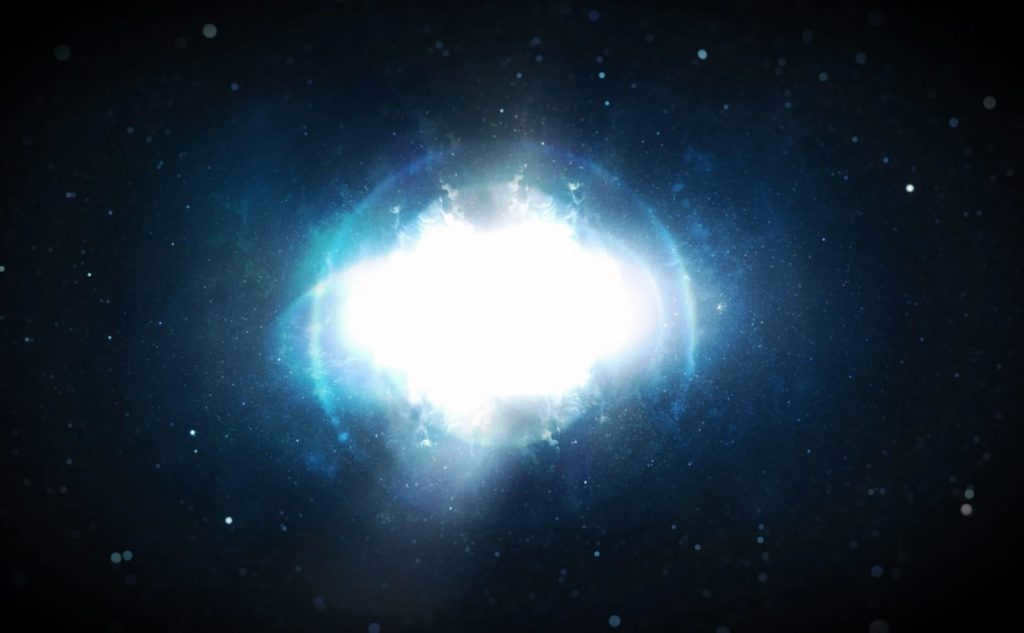
A white hole is the complete opposite of a black hole. Its primary characteristic is its impenetrable event horizon. White holes are sometimes referred to as “massless singularities” because they lack any matter and have no weight.
These entities were initially discussed in the 1970s, and since then, astrophysicists have remained hopeful of discovering at least one in outer space. Currently, white holes have never been directly observed, so their existence is solely based on theoretical data.
If black absorbs light and prevents it from escaping beyond the event horizon, then white, on the other hand, expels it into space with such intensity that it becomes impossible for radiation to penetrate and remain inside. Should such an entity truly exist, its luminosity would be immensely greater than that of stars.
There are also multiple indications suggesting that the existence of white holes is not possible. Firstly, in the course of its “lifetime,” this entity would need to gradually transition from a singularity into a star. Consequently, it would emit a significant amount of energy into space, while simultaneously storing it. This would be akin to a heated object heating up its surrounding space and maintaining its own temperature without any external assistance. Currently, such a process is deemed impossible. Secondly, the singularity within the white hole would have to form spontaneously, rather than arising from the extinction of a star. The spontaneous formation of such a singularity is also deemed highly unlikely.
However, there are indications of white holes within the universe, such as gamma-ray bursts. These phenomena involve the emission of a substantial amount of energy into space.
Understanding the vanishing act of black holes
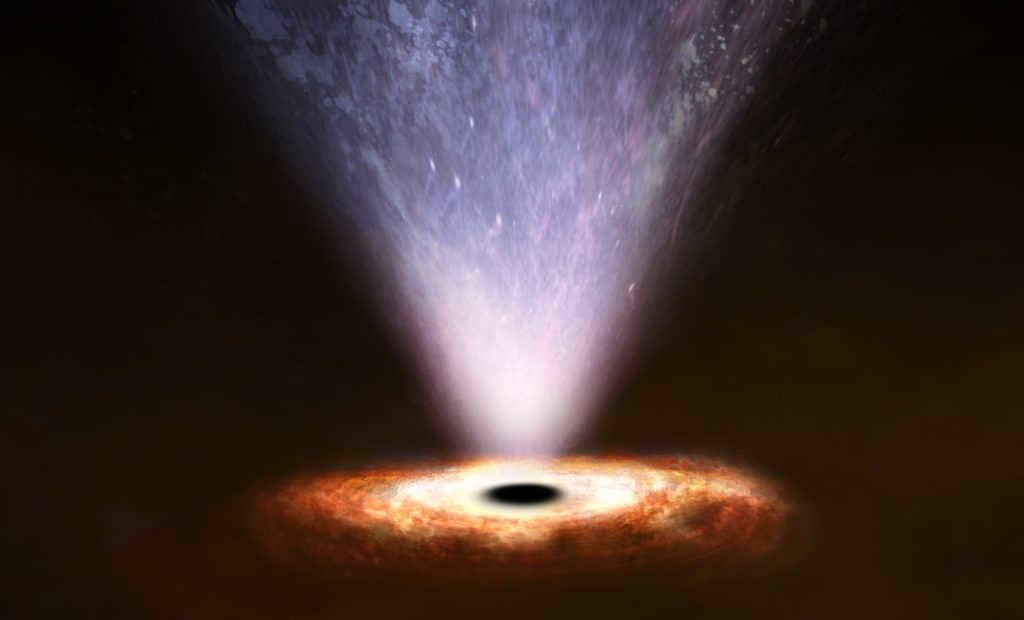
Currently, the disappearance of a black hole has not been directly observed by scientists, leaving its existence period unknown. A theory proposed by Stephen Hawking, known as “black hole evaporation,” attempts to shed light on this phenomenon.
Hawking’s theory is based on the emergence of virtual particles, which are a pair of tiny objects that frequently manifest in a vacuum. When these virtual particles form at the event horizon’s boundary, they will separate. One particle will travel towards the center of the black hole while the other will move away from it. The first particle will possess negative energy, resulting in the black hole losing an equivalent amount of mass.
If this “bombardment” continues regularly, the celestial body will gradually shed all of its mass and eventually vanish. However, this process will occur over an extended period of time. Nevertheless, there are opponents of this theory who argue that if a black hole loses mass upon absorbing an object, the loss must be compensated for by the weight of the matter trapped within it.

Black holes in the center of a galaxy gradually consume the matter surrounding them and expand in size. However, there is no record of a black hole fully engulfing an entire star cluster.
The complete absorption of a galaxy by a black hole is prevented by the law of universal gravitation and other factors. While a black hole exerts gravitational attraction, its influence weakens as objects move farther away from it. Additionally, celestial bodies within the galaxy orbit in a circular path, slowing down the absorption process. In essence, the black hole functions as the Sun, while the galaxy behaves like planets revolving around it, maintaining a certain distance.
If the hypothesis of “vaporization” is accurate, it may also provide an explanation for the lack of an all-consuming gravitational pull exerted by a black hole. Once it has assimilated a sufficient quantity of matter and energy, it must expel an equivalent amount into the vastness of space. Consequently, there exists a delicate equilibrium at which the absorption process ceases. While certain matter in close proximity to the black hole may still be subject to its irresistible force, the majority of the galaxy will remain unaffected by its gravitational effects.
Why black holes do not emit light
Black holes possess such immense mass and gravitational force that they cause a distortion of space and time within their boundaries. As a consequence of this phenomenon, any object that crosses the event horizon of a black hole, including light, becomes trapped and unable to escape. Consequently, black holes do not emit any form of radiation.
A fascinating video on black holes
If you happen to come across an error, kindly select the erroneous text fragment and press Ctrl+Enter.

In order to create a black hole, an object must be compressed to a specific density that causes its gravitational radius to be equal to its compressed radius. The critical density required for this compression is inversely proportional to the square of the black hole’s mass.
For a typical black hole with a stellar mass (M=10Msun), the gravitational radius is 30 km and the critical density is 2-1014 g/cm3, which is equivalent to two hundred million tons per cubic centimeter. This density is significantly greater than the average density of the Earth (5.5 g/cm3), and is comparable to the density of atomic nuclei.
For the planet Earth (M=3 x 10-6 Msun), the gravitational radius measures approximately 9 mm, and the corresponding critical density is incredibly high: ρkr = 2-1027 g/cm3, which is 13 orders of magnitude greater than the density of an atomic nucleus.
If we hypothetically use a spherical press to compress the Earth while maintaining its mass, reducing its radius by a factor of four (to 6370 km/4), the second cosmic velocity will double and reach 22.4 km/s. If we continue compressing the Earth until its radius is about 9 mm, the second cosmic velocity will reach the speed of light, which is c = 300,000 kilometers per second.
Moreover, there is no necessity for the press since the Earth will naturally compress itself when it reaches extremely small dimensions. Ultimately, the Earth will transform into a black hole, with an event horizon radius of approximately 9 mm (without considering the black hole’s rotation). In actual circumstances, there is no such thing as an incredibly powerful press – gravity does all the work. This is why black holes can only come into existence when the core of immensely massive stars collapse, as gravity is sufficiently strong to compress the matter to a critical density.
The development of stars
Black holes are created during the ultimate phases of the development of enormous stars. Inside regular stars, thermonuclear reactions occur, resulting in the release of vast amounts of energy and the maintenance of high temperatures (tens and hundreds of millions of degrees Celsius). The gravitational forces attempt to compress the star, while the pressure forces of hot gas and radiation counteract this compression. Consequently, the star remains in a state of hydrostatic equilibrium.
Moreover, a star can achieve a state of thermal balance when the energy released from thermonuclear reactions at its core is precisely matched by the power radiated from its surface. However, this equilibrium is disrupted as the star undergoes contraction and expansion. In the case of a stationary star, its equilibrium is established in such a way that the negative potential energy (resulting from gravitational contraction) is always twice the absolute value of the thermal energy. This gives the star a remarkable characteristic – a negative heat capacity. Unlike ordinary objects that have a positive heat capacity, such as a piece of iron that cools down and loses energy, a star exhibits the opposite behavior. As it loses energy through radiation, the temperature at its core actually increases.
White dwarfs
If the size of a star is relatively small, to the point where the size of its central core impacted by nuclear reactions is less than 1.4Msun, the nuclear fusion of elements may halt due to the degenerate nature of the electron gas within the star’s core. Specifically, the pressure of the degenerate gas is dependent on density but not on temperature, as the energy from the quantum movements of electrons is significantly greater than the energy from their thermal movements.
The immense pressure exerted by the degenerate electron gas effectively counteracts the compressive forces of gravity. As this pressure is independent of temperature, the star’s core does not undergo compression even when it loses energy through radiation. Consequently, gravitational energy is not released as additional heat. This lack of temperature increase in the evolving degenerate core disrupts the chain of thermonuclear reactions.
The outer layer of hydrogen, which is not affected by thermonuclear reactions, separates from the star’s core and forms a planetary nebula. This nebula emits light in the form of hydrogen, helium, and other element emission lines. The core of a low-mass star in the pre-evolved stage is a white dwarf, which is compact and relatively hot. It has a radius similar to that of Earth (~10,000 km), a mass less than 1.4 times the mass of the Sun, and an average density on the order of one ton per cubic centimeter. White dwarfs are abundant in the universe, with a total number of approximately 10^10 in the Milky Way. This means that they make up about 10% of the total mass of observable matter in our galaxy.
Unstable thermonuclear fusion can occur in a degenerate white dwarf, resulting in a nuclear explosion. This phenomenon typically happens to white dwarfs with a mass close to the Chandrasekar limit (1.4Msun). These explosions are referred to as Type I supernovae and are characterized by the absence of hydrogen lines in their spectrum. Instead, they display lines of helium, carbon, oxygen, and other heavier elements.
If the nucleus of a star becomes degenerate, when its mass reaches the limit of 1.4Msun, the regular degeneracy of the electron gas is replaced by the phenomenon known as relativistic degeneracy.
The quantum movements of the degenerate electrons become so rapid that their velocities approach the speed of light. The gas loses its elasticity, its ability to resist gravitational forces diminishes, and the star undergoes gravitational collapse. During this collapse, protons capture electrons and the material becomes neutronized. This results in the creation of a neutron star from a massive degenerate core.
If the initial mass of the star’s core is greater than 1.4Msun, the core will reach a high temperature, and electron degeneracy will not occur during its evolution. In this scenario, the negative heat capacity comes into play: as the star emits energy through radiation, the temperature inside the star increases, and a continuous chain of thermonuclear reactions takes place, converting hydrogen into helium, helium into carbon, carbon into oxygen, and so on, until the elements of the iron group are formed. The fusion reaction of elements heavier than iron does not release energy, but instead absorbs it. Therefore, if the mass of the star’s core, which mainly consists of iron group elements, exceeds the Chandrasekar limit of 1.4Msun but is less than the so-called Oppenheimer-Volkov limit of ~3Msun, the core undergoes gravitational collapse at the end of the star’s nuclear evolution. This results in the ejection of the outer hydrogen shell of the star, which is observed as a Type II supernova explosion, characterized by powerful hydrogen lines in its spectrum.
The collapse of the iron core results in the creation of a neutron star.
When a star’s massive core, which has reached an advanced stage of evolution, is compressed, the temperature skyrockets to enormous levels, reaching about a billion degrees Celsius. At this point, the atomic nuclei begin to disintegrate into neutrons and protons. Protons capture electrons and transform into neutrons, emitting neutrinos in the process. Neutrons, following Pauli’s quantum mechanical principle, start to effectively repel one another under intense compression.
If the mass of the collapsing nucleus is less than 3Msun, the speed of neutrons is significantly lower than the speed of light, and the matter’s elasticity, resulting from the repulsion of neutrons, can counterbalance the gravitational forces, leading to the formation of a stable neutron star.
In 1932, following the discovery of the neutron during laboratory experiments, the esteemed Soviet physicist Landau made the groundbreaking prediction of the existence of neutron stars. These cosmic entities have a radius of approximately 10 km and possess an average density of hundreds of millions of tons per cubic centimeter.
Black holes
According to current theories, when the mass of the collapsing core of a star exceeds 3.Msun, the resulting neutron star will eventually cool and collapse into a black hole. The process of a neutron star transforming into a black hole is also aided by the inward collapse of a portion of the star’s shell, which is expelled during a supernova explosion.
Radio pulsars are a manifestation of single neutron stars with a powerful magnetic field. These pulsars emit regular pulses of radio waves, which result from the conversion of the rapid rotation energy of the neutron star into directed radio emissions. On the other hand, in double systems, neutron stars that accrete matter exhibit the phenomenon of X-ray pulsars and type 1 X-ray bursts.
Periodic pulsations of radiation cannot be expected in a black hole due to the absence of an observable surface and magnetic field. Physicists often state that black holes have no “hair” – any fields and inhomogeneities near the event horizon are emitted as gravitational waves during the black hole’s formation from collapsing matter. Consequently, a formed black hole possesses only three attributes: mass, angular momentum, and electric charge. The unique properties of the collapsing matter are lost during the black hole’s formation; for instance, black holes formed from iron and water would have the same characteristics, assuming all other factors are equal.
As stated in the General Theory of Relativity (GTR), when stars have iron nuclei masses exceeding 3Msun at the end of their life cycle, they undergo unlimited contraction (known as relativistic collapse) and form a black hole. This phenomenon occurs because in GR, the gravitational forces that aim to compress a star are determined by its energy density. When the density of matter becomes extremely high during the compression of a massive star core, the main contribution to the energy density comes from the motion and interaction of particles, rather than their rest energy. In GR, it is found that the pressure of matter at very high densities effectively “weighs” itself: the higher the pressure, the greater the energy density, and therefore the stronger the gravitational forces that drive the compression of matter. Additionally, the effects of space-time curvature become significantly important in strong gravitational fields, further facilitating the unlimited compression of a star’s core and its transformation into a black hole (Fig. 3).
Concluding, it is worth noting that the black holes that have been formed in our current era (such as the black hole in the Swan X-1 system) are not technically one hundred percent black holes. This is due to the fact that, from the perspective of a distant observer, the event horizons have not yet fully developed as a result of the relativistic time dilation. To an observer on Earth, the surfaces of these collapsing stars appear frozen, progressively approaching their event horizons indefinitely.
In order for these black holes to fully form from the collapsing objects, we would have to wait for an infinitely long period of time, encompassing the entire existence of our Universe. It is important to note, however, that even in the initial seconds of the relativistic collapse, the surface of the collapsing star comes very close to the event horizon for an observer on Earth, and all processes on this surface become infinitely decelerated.
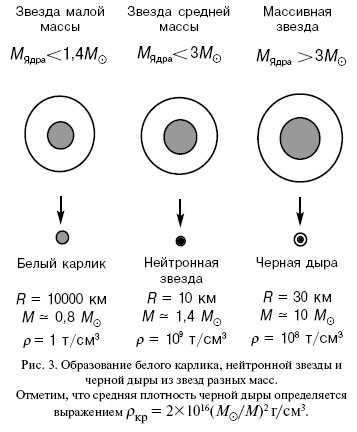
1 The term “Msun” refers to the mass of the Sun.
Black holes defy the conventional laws of physics. Their immense mass and gravity distort the fabric of space and time, potentially opening up portals to other parts of the universe. These enigmatic objects continue to captivate scientists, who endeavor to study them through mathematical models, observations, and theoretical conjecture.
Black holes are regions in space where the force of gravity is incredibly powerful, preventing anything, including light and other forms of electromagnetic radiation, from escaping. These mysterious phenomena form when a star reaches the end of its life and its core collapses to an extremely small size.
The presence of a black hole causes a distortion in the fabric of space and time, resulting in a phenomenon known as gravitational lensing. This effect causes light from distant objects to become warped and bent as it passes near the black hole. Additionally, the extreme curvature of space and time around a black hole may create a hypothetical connection between different regions of spacetime known as a wormhole.

Envision a sheet of paper with two marked points – point A and point B. These points exist at opposite ends of the sheet, much like objects are situated at opposite ends of the cosmos. To establish a link between points A and B, one could simply draw a straight line across the paper from point A to point B. However, if you begin to fold the paper, it will contort, similar to how space-time distorts in the presence of a black hole. As the paper “contracts,” points A and B can connect without moving independently. This connection between the points would be the wormhole.
If a wormhole like this were to exist, it would enable travel between different locations in space without regard to distance. However, there is currently no evidence to support their existence.
What is the size of black holes?
Black holes can vary in size, ranging from small to large. Scientists propose that the smallest ones are comparable in size to a single atom, yet possess the mass of a massive mountain. Mass refers to the quantity of matter or “substance” within an object.
The mass of “stellar” black holes can reach up to 20 times the mass of the Sun. The largest black holes, known as “supermassive,” have a mass exceeding that of 1 million suns.

In the heart of each significant galaxy, there exists a colossal black hole known as a supermassive black hole. Our very own Milky Way galaxy also harbors such a celestial phenomenon, known as Sagittarius A. This immense black hole possesses a mass equivalent to that of approximately 4 million suns and has the capacity to contain several million Earths within its gravitational grip.
No one is certain. Allegedly, a black hole is composed of two primary components. Firstly, there is the event horizon, which is a boundary in space-time that can only be crossed inward by matter and light. Anything, including light, is unable to escape the event horizon and cannot be detected.
From the perspective of a distant observer, clocks near a black hole will seem to move slower compared to those further away. This phenomenon is known as gravitational time dilation. It causes an object that is descending into the black hole to appear to decelerate as it approaches the event horizon. Any light emitted by the object appears redder and fainter. Eventually, the descending object completely vanishes. This is what it appears like.
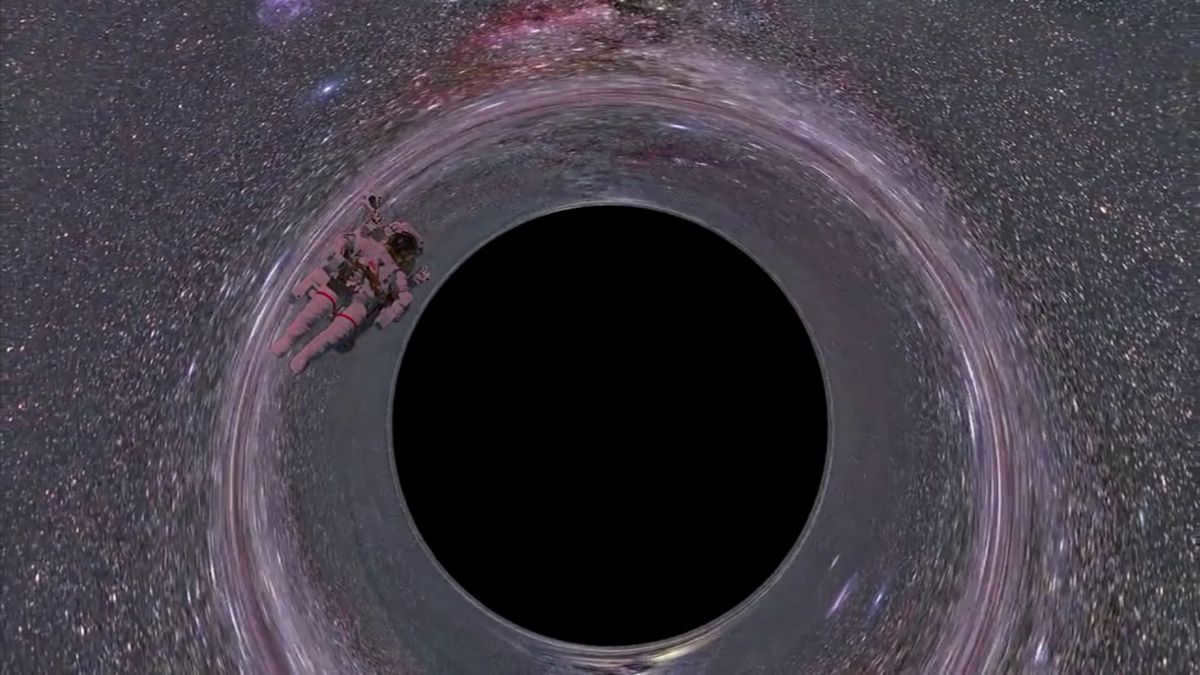

According to the principles of the general theory of relativity, the center of a black hole contains a gravitational singularity, a region where the curvature of spacetime becomes infinitely strong. In the case of a non-rotating black hole, this singularity takes the form of a single point, while in the case of a rotating black hole, it becomes more diffuse and forms a ring-like shape. The singularity itself has an infinite density. The distance from the center to the event horizon is known as the Schwarzschild radius.
Formation of black holes
Black holes can be formed when massive stars undergo a gravitational collapse. As a star exhausts its fuel and is no longer able to withstand the force of gravity, its core collapses, leading to the creation of a black hole with an immensely powerful gravitational field. Alternatively, larger black holes can be formed through stellar collisions.
In principle, it is possible for a minuscule black hole to be generated through the collision of particles in a particle accelerator like the Large Hadron Collider. However, many experts consider this scenario to be highly improbable.
How radiation is emitted by black holes
In the 1970s, Stephen Hawking, an astrophysicist, pondered the possibility of black holes emitting heat. In order to calculate the temperature of this emission, he merged concepts from Einstein’s theory of relativity, which explains the mechanics of gravity on a large scale, and quantum mechanics, which explains the behavior of the smallest constituents of the universe. Scientists have been attempting to reconcile these two fundamental theories of the universe for many years. Both theories are involved in the phenomenon known as the event horizon.
According to the principles of quantum mechanics, particles and their corresponding antiparticles are in a constant state of appearing and disappearing throughout the vast expanse of the Universe. Ordinarily, when they do appear, their existence is fleeting, as the particle and its antiparticle counterpart swiftly annihilate each other. However, life at the periphery of a black hole operates under a different set of rules. The gravitational field in this region influences the vacuum, thereby facilitating the production of particle-antiparticle pairs. Some of these pairs become absorbed by the black hole, while others are propelled out into the surrounding space.
As the departing particle emerges, it generates what is known as Hawking radiation, while the falling particle possesses negative energy. This negative energy effectively diminishes the mass and energy of the black hole. In essence, Hawking’s groundbreaking research demonstrated that black holes gradually lose their mass and energy over the course of billions of years, ultimately leading to their eventual disappearance. Despite the significance of this discovery, scientists have yet to directly observe this radiation phenomenon.
What is the evidence for the existence of black holes?
In 1784, John Michell proposed the idea of a massive object with such strong gravitational pull that its escape velocity would be equal to or greater than the speed of light. This concept laid the foundation for the concept of black holes. Later, in the 20th century, Albert Einstein predicted the existence of gravitational waves – ripples in the fabric of space-time caused by incredibly powerful cosmic events. According to Einstein, these waves would be extremely difficult to detect due to their minuscule size. However, advancements in technology and scientific research have allowed us to observe and measure the effects of these waves, providing strong evidence for the existence of black holes.

It appears that they have the potential to be. In the year 2016, scientists successfully detected gravitational waves for the very first time. These waves were generated when two black holes, each with a mass 30 times greater than that of the Sun, collided. This incredible event took place a staggering 1.3 billion light years away from our planet. Additionally, in the year 2019, the Event Horizon Telescope (EHT) unveiled the initial direct visual of a black hole situated at the center of the Messier 87 galaxy. Remarkably, this marked the first time such an image had ever been captured. Presently, as of 2021, the closest known object suspected to be a black hole is estimated to be approximately 1,500 light-years distant.
Stephen Hawking’s Perspective on Black Holes
The Contradiction: Hawking’s Denial of Black Holes
While acknowledging the presence of immense gravitational singularities at the core of numerous galaxies, such as our very own Milky Way, Stephen Hawking opposed the traditional notion of black holes. Contrary to popular belief, he argued that black holes are not everlasting prisons that engulf everything, even light. In his viewpoint, black holes possess a perpetual shade of gray, characterized by an unpredictable and ever-changing boundary rather than a distinct event horizon.


Hawking proposed a theory that in the vicinity of a black hole, the laws of quantum mechanics cause a distortion in the fabric of space-time, resulting in the absence of a well-defined edge to the event horizon. He posited the existence of an “apparent horizon” – a boundary where radiation emitted from the center of the black hole is only temporarily delayed. Unlike the classical event horizon, this “apparent horizon” could potentially vanish, allowing for the escape of matter from within the black hole.
What is the concept of information paradox?
In a paper published in 1976, Hawking brought attention to the fact that the outgoing particles from a black hole, also known as Hawking radiation, would possess completely random characteristics. Consequently, once the black hole evaporates, any information carried by objects that had fallen into it would be permanently lost in the vastness of the universe. However, this poses a contradiction to the fundamental laws of physics, which assert that information, just like energy, cannot be destroyed. This scientific quandary arises when attempting to reconcile the two prominent theories of physics: general relativity and quantum mechanics.
According to quantum mechanics, it is impossible for information to vanish completely, but rather it must be conserved over time. This means that even if an object carrying information falls into a black hole, the information it holds still persists.
This leads to a paradox: if an object with information enters a black hole and seemingly disappears, the information should also be destroyed. However, this contradicts the fundamental principles of information conservation in quantum mechanics. Where does the information go when it is absorbed by the black hole? Scientists continue to grapple with this question, proposing various theories such as the “firewall theory” and the concept of “quantum hair”.

